Instant coffee contains a lot of additives and has no refreshing effect.
Follow the caf é (Wechat official account vdailycom) and found that Beautiful Cafe opened a small shop of its own.
Instant coffee contains a variety of chemically added ingredients silver in water can be detected by a new biological assay technology.
In recent years, the coffee craze has become popular all over the world, which has not only become a new indicator of food culture, but also been described as a symbol of identity. However, the price of chain coffee is always higher than that of instant coffee, and the taste of instant coffee is constantly innovated and easy to make, and many coffee people also like to work as "coffee mixers", making their own blend in the office or at home. However, when choosing instant coffee products, members of the public may ignore a series of additives contained in instant coffee, and excessive consumption may pose a health risk.
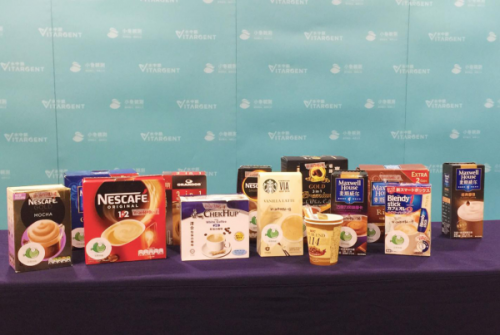
Mr. du Weiliang, CEO of Mercury Bank, pointed out: "ready-to-eat culture is hot in the market and conforms to the rapid pace of life of urbanites." However, in order to maintain the quality and emulate the 'original' taste, different food additives must be added to the formula to enrich the taste and enhance the color, aroma and taste.
"Little Fish testing" refers to many countries and countries such as International Codex Alimentarius, European Union, United States, China and Japan.
Safety standards, which are formulated through horizontal comparisons of similar products:
The "green fish" represents "excellent quality". The product performs well in acute and chronic toxicity testing and prohibited component screening.
Consumers can have peace of mind to choose.
The product stands for "basically qualified", and the product is basically qualified in acute and chronic toxicity testing and prohibited component screening.
Consumers should be cautious when choosing and buying
Red fish stands for "need to be improved", and there is one item in acute and chronic toxicity testing and prohibited component screening.
The "small fish test" test results show that of the 30 instant coffee samples, 13 samples are green fish (representing excellent quality), 7 samples are yellow croaker (representing basically qualified), and 10 samples are red fish (representing the need for improvement).
In terms of price, among the 30 samples purchased, the average price is HK $4 per package. The lowest price is
HK $1 per package, with a maximum of HK $11.4 per package, with a difference of 11 times.
For samples with prices ranging from HK $2.7 to HK $3.8, 5 green fish (56%), 1 yellow croaker (11%) and 3 red fish (33%)
The average proportion of green, yellow and red fish was 4 (33.3%) for samples with a price of over HK $3.8 per package.
To sum up, high-price samples are mixed, and there is no inevitable law that "the more expensive, the safer"; on the contrary, the price
The medium sample performed better in this test.
Mr to Weiliang said, "We compared the test results of instant coffee with the coffee database and found that in acute toxicity tests, instant coffee was 1.8 times more toxic than chain coffee, and there was no doubt that some of the ingredients had toxic reactions. According to the European, American and local food labelling regulations, various ingredients and ingredients should be listed according to the weight or volume they occupy in food packaging. According to the ingredient labels of instant coffee samples, nearly 90% of the test samples are led by food additives, including the most common cream (plant fat powder), granulated sugar, emulsifiers and stabilizers. Instant coffee powder is often ranked last or even last. Some of the sample labels clearly indicate that instant coffee powder accounts for less than 10% of the total ingredients (5-9%), and the remaining 90% are food additives. "
"in addition, it was found that foam coffee (Cappuccino) had the lowest overall safety, with 4 red fish (57%), followed by white coffee (White Coffee) and 2 red fish (40%). Through data analysis, we found that the average additive composition of foamy coffee (Cappuccino) was 15, which was the highest among all kinds of instant coffee, followed by white coffee, with an average of 11, which coincided with the results of "small fish test". From this, it is inferred that the more the number of food additives, the lower the number of instant coffee samples tested by small fish. "
Mr du Weiliang pointed out that food additives were very important to the food industry, not only to improve the stability, color, aroma and taste of food, but also to prolong the shelf life. However, some chemicals have the potential to cause potential health risks. Plant fat powder is often at the top of the list on the ingredient label of instant coffee, and its main ingredients include hydrogenated vegetable oil, glucose syrup and casein. Can enhance the quick solubility of coffee, injected into the water can form a uniform milk, but in fact may not contain milk. Plant fat powder mostly contains hydrogenated fat and trans fat. Excessive intake can increase the content of low density lipoprotein cholesterol in the body and increase the risk of cardiovascular disease. In recent years, scientific studies have confirmed that trans fat is associated with Alzheimer's disease, infertility, breast cancer, prostate cancer and so on.
In addition, the nutrients in instant coffee are also worthy of attention, especially fat, calories and sugar intake. Sugar is one of the main components of instant coffee. According to the nutrition label, the sugar content of individual test samples is up to 19 grams per packet. According to the World Health Organization (WHO), the daily sugar intake limit is 50 grams, that is, about 10 teaspoons of sugar. If calculated on the basis of three meals, sugar intake is likely to exceed the standard. In addition, in 14 samples with clearly marked sugar content, the sugar content ranged from 0.6 g / packet to 19 g / packet. According to the blending guidelines on product packaging, it is found that the sugar content of eight samples exceeds the guidelines of the Centre for Food Safety, that is, the sugar content of every 100 ml of beverage should not be higher than 5 grams. However, the sugar content of over-standard samples ranges from 6 grams to 10 grams. Sugar can be addictive and excessive consumption can lead to diseases such as obesity, diabetes, heart disease and liver disease, according to the Truth about the toxicity of Sugar published in the scientific journal Nature in 2012.
Mr to Wai-Liang reminded consumers: "when buying instant coffee, consumers should pay more attention to the nutrition and ingredient labels on the packaging and choose products with less sugar and ingredients as far as possible. At the same time, members of the public can log on to the small fish for personal testing to show the 'Green Fish' brand which has passed acute and chronic toxicity testing and prohibited ingredient screening, so as to make a more secure purchase choice. "
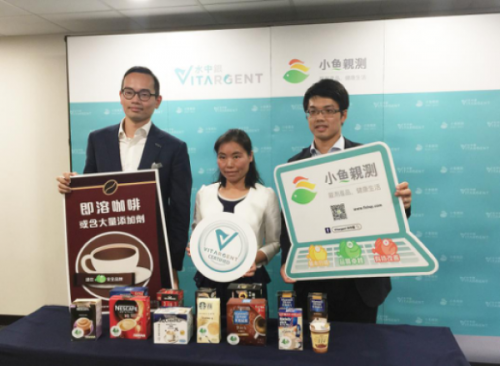
From left: Mr. du Weiliang, CEO of Bank of Water, Miss Chen Xueping, Chief Technology Officer, and Mr. Chen Zixiang, Chief Commercial Officer
About Silver in Water
Silver in Water (International) Biotechnology Co., Ltd. was established in 2010, the vision is "wisdom testing, peace of mind to choose, a better world". The company is strongly supported by a number of investment institutions, including US Business China Economic Cooperation Group, Ying Nuo Capital, City University of Hong Kong Fund, Hong Kong Group, Liuhe Group, Bridgefield Global Limited, Babaluba Industries Group and a number of investment bankers. The research and management team has degrees from institutions such as Cambridge, MIT, Stanford, the University of Hong Kong and the City University of Hong Kong, and all have postgraduate or doctoral degrees. The International Committee of scientists is composed of world leading scientists from the United States, Germany, Japan, Sweden, Singapore and Hong Kong. They participate in the selection, development and promotion of a number of international standards. Since its establishment, the company has won a number of regional and international awards, including "the 43rd Geneva International Invention Exhibition Global Honor Award" and "2015 Davos Global Innovation Pioneer". "Asian Champion of Hong Kong Young Entrepreneur Award", "second Runner-up of Lee Kuan Yew Global Business Competition", "Middle East Global Invention Conference Gold Award", "World intellectual property Invention Inventors Award", "Korean Invention Gold Award", "Hong Kong Industrial and Commercial Science and Technology Achievement Award" and was awarded as "Science and Technology demonstration Project in the past decade" by the Hong Kong Government. The company has been committed to providing the world's leading and innovative testing methods to enhance the safety of food, medicine, cosmetics and water environment, and has successfully developed and commercialized a number of global pioneering technologies, such as genetically modified luminous fish to test for chronic toxic. zebrafish test for acute toxicity. The laboratory has been certified by the International Standard (ISO17025) since 2013 and is the only test center in Asia that can provide fish embryotoxicity test (FET). The results of the test have been officially recognized in more than 100 countries and economies around the world. The clients of the service include leading testing centers at home and abroad, government agencies and large international cosmetics groups and food groups. with the support of these groups and governments, related technologies are developing into regional and international standards. it is a classic case in which the technology developed in Hong Kong has been successfully adopted by the top scientific research and commercial institutions at home and abroad and developed into an international standard.
About the personal test of small fish
As a consumer, "Little Fish testing" regularly buys different types of food and supplies in large supermarkets, chain stores and online shelves, and tests them through biological testing Testing 2.0 technology. With reference to the international safety standards of the European Union, the World Health Organization, the Organization for Economic Cooperation and Development, and many countries, including the United States, Japan and China, through horizontal comparison of similar products, the safety attributes of product test results are divided into three categories: green fish-yellow croaker-red fish. The operation concept of "Little Fish testing" is to praise enterprises and products that meet the standards of quality excellence, and to encourage enterprises and brands that do not meet the standards to actively improve the quality of their products, so that consumers can feel more at ease to buy, and help brands build long-term benefits.
A brief introduction to some of the world's leading biological testing Testing 2.0 technologies for silver in water
1. Chronic toxicity test of mackerel embryo
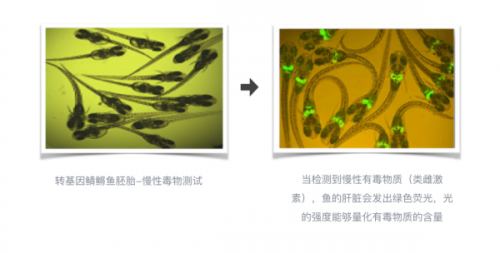
Silver in the water transferred a Nobel Prize-winning fluorescent protein gene into mackerel embryos and stabilized it for more than ten generations after eight years. The stability and accuracy of the test have been internationally recognized. Silver in the water has an exclusive patented technology for testing estrogens using transgenic mackerel embryos. Estrogens (including pesticides, veterinary drugs, antibiotics, hormones, plasticizers, organic persistent pollutants, etc.) can disrupt the estrogen endocrine system and have been shown to be associated with cancer, infertility, precocious puberty in children, decreased IQ, nervous system disorders and diabetes. According to the World Health Organization, the United Nations and the US Environmental Protection Agency, estrogens have become the third most serious threat to human beings, biodiversity and ecosystems after global warming and ozone layer destruction in Greenhouse Effect. After the sample is pretreated, the transgenic mackerel guppy embryos will be tested. When confronted with chronic toxicants (estrogens), transgenic fish embryos will emit different intensities of green fluorescence, which can quantify harmful substances, thus assessing the safety risk to human beings according to the World Health Group Standard Huai (WHO/FAO).
two。 Acute toxicity test of zebrafish
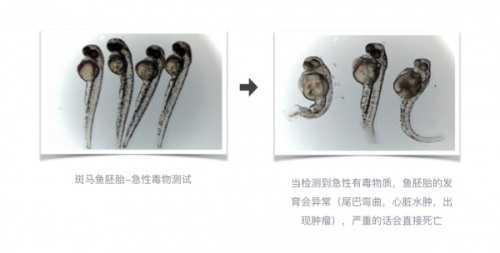
Zebrafish embryo testing technology has appeared on the cover of the world's top science journal (Nature). According to the results of the National Institutes of Health (National Institutes of Health), zebrafish and human disease-related genes have 84% similarity and have been proved to be able to screen more than 1000 toxic chemicals, which have been widely used to evaluate the safety and efficacy of drugs.
When encountered with harmful substances, the fish embryo will appear abnormal, such as head or tail tumor, heart edema, serious fish embryo death directly.
After pretreatment, the product is tested with zebrafish embryos to find out the concentration (semi-lethal concentration, LC50) that causes the death of half of the tested zebrafish embryos. The definition of embryonic death of zebrafish in the test conforms to ISO15088 and OECD TG 236 standards.
Following the release of edible oil and BB cream, the small fish test platform of Silver in Water (International) Biotechnology Co., Ltd. has entered the field of coffee, which is invented by Hong Kong people and the world's exclusive "transgenic mackerel" and "zebrafish" embryotoxicity testing technology for instant coffee on the market. In terms of overall safety, instant coffee brands produced in Southeast Asia are worse than those in Europe and the United States; among them, foamy coffee (Cappuccino) has the lowest overall safety, and more than half of the samples failed the safety test. In addition, the results showed that the toxicity level of instant coffee was 1.8 times higher than that of chain coffee. However, the coffee content in some test samples only accounts for 5-9% of the total ingredients, which is not the source of toxicity. It is inferred that the toxicity mainly comes from the remaining 90% of beverage additives, including stabilizers, emulsifiers, anti-coagulants, seasonings and so on. Consumers are advised to focus on green fish safety products when buying instant coffee.
Important Notice :
前街咖啡 FrontStreet Coffee has moved to new addredd:
FrontStreet Coffee Address: 315,Donghua East Road,GuangZhou
Tel:020 38364473
- Prev

Waste coffee bean shells are made into reusable and environmentally friendly coffee cups.
Professional baristas follow the Coffee Workshop (Wechat official account cafe_style) as the world's largest coffee chain, Starbucks consumes about 4 billion disposable cups worldwide every year. If consumers want to reduce this waste, they can certainly bring their reusable cups to the coffee shop. However, Australian start-up Huskee has
- Next
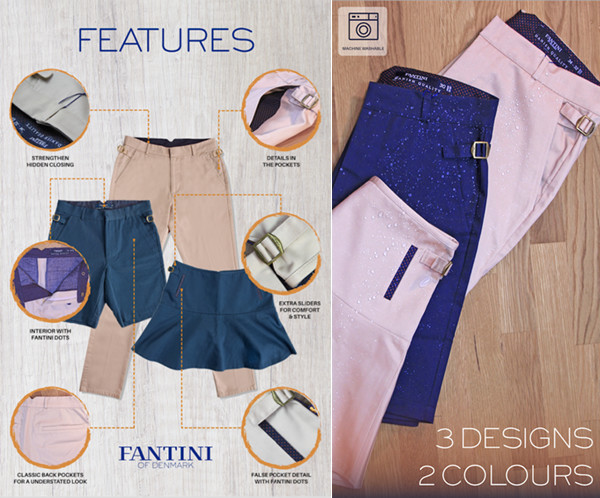
High-tech waterproof material clothes, red wine and coffee are not afraid to spill
The new clothing developed by Danish start-up Fantini is not afraid of liquid splashing and feels very cool. Since we are not afraid of liquids, it means that there is no problem with water, fruit juices, red wine, milk and almost all the liquids we often come into contact with in our daily life. You may ask: how does Fantini achieve waterproofing? The answer is new fabric technology. All clothes are comfortable.
Related
- What is the difference between a cake filter cup and a V60 conical filter cup? What are the advantages and disadvantages of the flat-bottomed filter cup brewing solution?
- What is the difference between fine coffee powder and medium coarse coffee powder? Do I need to sift out the fine coffee powder for making coffee by hand?
- Why does hot American coffee taste bitter? Difference in proportional concentration between hot American and ice American
- Is espresso stored overnight in the refrigerator harmful to your body? Is frozen coffee better than freshly ground coffee?
- What parameters and proportions of water temperature should be used to grind and brew fresh coffee beans? Why can't I drink freshly roasted coffee right away?
- Customers have "changed" Manner's new products! Shop assistant: Please don't mess around!
- Remove sockets in customer areas at Starbucks stores?! Netizen: I won't go if I really tear it down
- What is the difference between the taste steps of sun-dried coffee and washed coffee? Why is sun-cured coffee sweeter and washed coffee sour?
- The recipe for salty grapefruit dirty is revealed! Coffee Festival salty grapefruit dirty coffee making materials parameters ratio milk share!
- How about the flavor of Sunlight 74158 at Sidamo Banshaha Mathieu Processing Factory in Ethiopia? 74158 Share the proportion of coffee brewing parameters!

